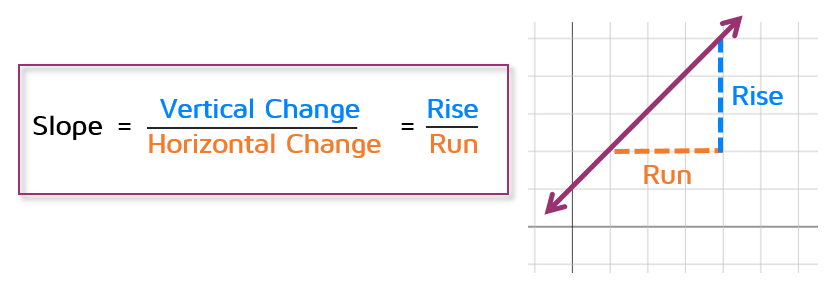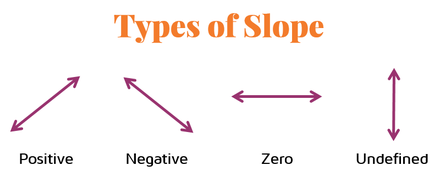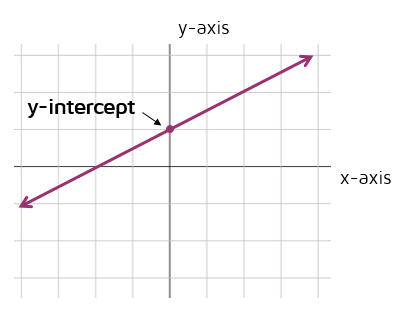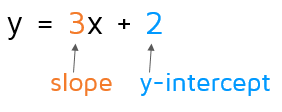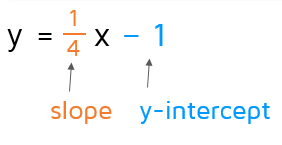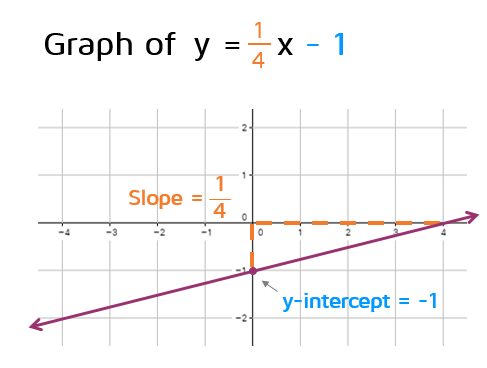|
Lines are commonly written in what's called "slope-intercept form." When an equation for a line is written in this form, it's easy to see what the slope of the line is and what the y-intercept is (hence the name).
|
|
There are a few different ways to write the equation of a line. One of the most common ways is called "slope-intercept" form. It's called this because it clearly identifies the slope and the y-intercept in the equation. The slope is the number written before the x. The y-intercept is the constant written at the end.
Slope-Intercept Form Examples
Let's look at a few examples of equations in slope-intercept form.
When an equation of a line is written in slope-intercept form, the number in front of the x represents the slope. In this equation, there is a 3 in front of the x. This means the slope of the line is 3. The constant written at the end represents the y-intercept. There is a positive 2 at the end. This means the y-intercept is 2. If you're asked to write the y-intercept as an ordered pair, it would be the point (0,2). Remember, the y-intercept is where the graph crosses the y-axis. The x-coordinate of every point on the y-axis is always 0 so the y-intercept is always (0,b)
Let's also look at the graph of this line. The y-intercept is 2. This means it crosses the y-axis 2 units up from the origin. We also know the slope is positive 3. Whenever the slope is positive, the line will go up to the right. 3 is the same as 3/1 so this means it goes up 3 units and over to the right 1 unit (remember, slope is rise/run).
When an equation is in slope-intercept form, the slope is the number in front of the x. This means the slope is 1/4. A line with a slope of 1/4 will go up 1 and over to the right 4. The y-intercept is the constant at the end. Pay close attention to the sign of the y-intercept. This equation has a minus sign, so the y-intercept is -1. This means the line crosses the y-axis at the point (0,-1).
It's pretty straightforward to graph this line. The y-intercept is -1, so it crosses one unit down from the origin. The slope is a positive 1/4, so it will go up 1 unit and over 4 units to the right.
Video
Want to see another example? Check out the short video below.
Practice
Ready to try a few problems on your own? Click the START button below to try a practice quiz.
|
Powered by Interact |
